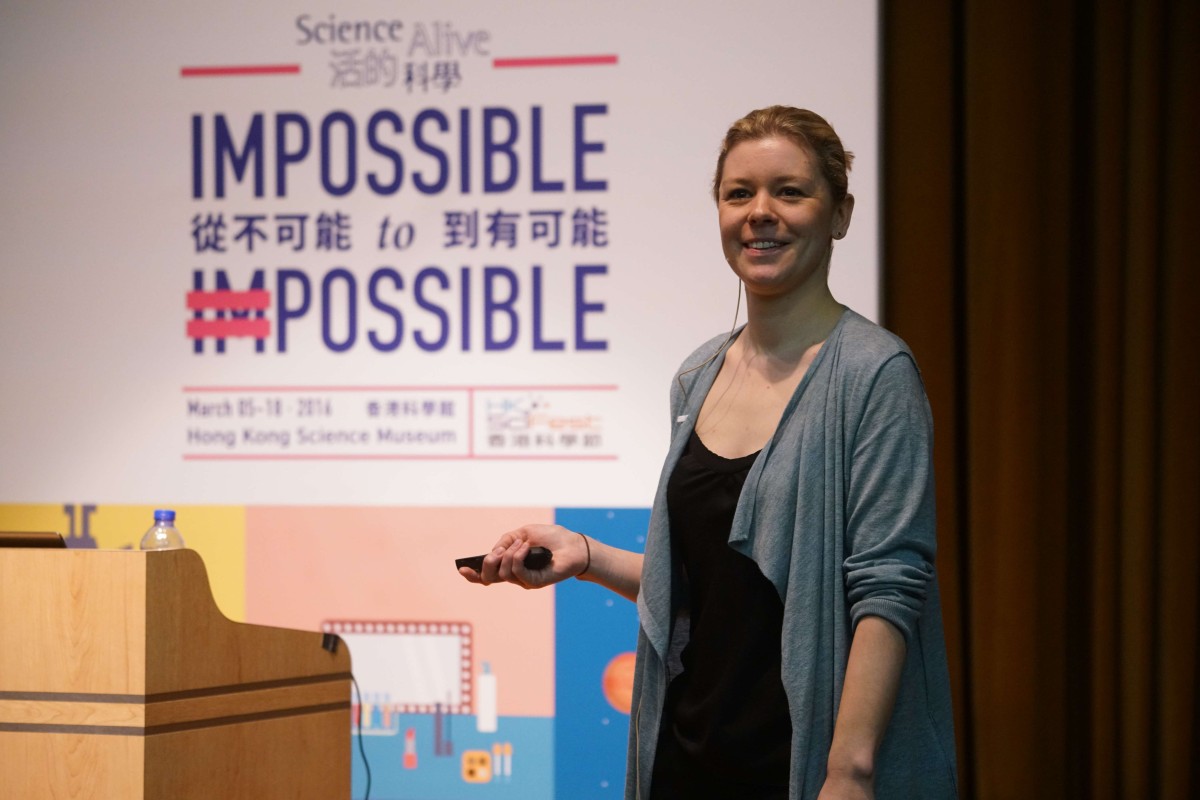
Dr Colley speaks about tissue engineering as part of Science Alive 2016 at Hong Kong Science Museum
 Dr Helen Colley speaks about the future of 3D printing in biotechnology at Science Alive 2016 on March 9, 2016.
Dr Helen Colley speaks about the future of 3D printing in biotechnology at Science Alive 2016 on March 9, 2016.In the lecture hall at the Hong Kong Science Museum, Dr Helen Colley stands in front of a screen showing a picture of an ear on a mouse.
Of course, all mice have ears, but this one is special – it’s a human ear growing on the back of a mouse. Dr Colley, a researcher at the University of Sheffield in the UK, is explaining how tissue engineering has progressed in the almost 20 years since that ear was grown on the mouse in 1997. The lecture hall is filled with both students and adults who have come to hear Dr Colley speak about tissue engineering as part of the museum’s Science Alive 2016 programme.
Dr Colley works primarily with the largest organ in the body – skin. “With tissue engineering, definitely skin has led the way,” she says. “It’s so easy compared to other organs to reproduce.”
But that’s not to say that creating skin is simple. Tissue engineering is a complex field. To successfully create new organic tissue, it takes a lot of people from different specialties working with different types of cells that all need to come together in just the right way.
To grow new tissue in a laboratory, like skin, scientists have to first have a structure to support the new cells. Then they need to add different types of cells to that structure, or “scaffold”, and give them the signals which tell the cells how to grow. “We can give them what we call grow factors,” explains Dr Colley. “Those are particular signals to make them divide and to grow. Or we can give them sort of a different chemical that can lead them to mature a different way, so we call it differentiation.” With the right chemicals sending the signals telling the cells how to grow and what to become, the cells can then do their job and form the correct tissue. “So for example if you wanted to make heart tissue, we can give them certain chemicals to produce a heart,” Dr Colley says. “If you put it into the body, hopefully then the supporting tissue would then help maintain that, so that you would get the signals from the surrounding tissues around the body.”
But we’re still a long way off from being able to completely engineer a new heart. “There’s so much complexity in there for the tissue to function,” she explains. “So we can do something that looks like an organ, but for it to actually function it’s quite a long time off.”
But developments are coming fast, and 3D printing is paving the way for innovations in tissue engineering. Scientists are now experimenting with 3D printing to create the scaffolds for cartilage or bone. “The complexity of the scaffolds that they can make with 3D printing can be very personalised,” she says, “with all the shapes that you can mould from the patient to really personalise treatment.”
And Dr Colley says that for skin, 3D printing is the way of the future. “3D printing gives us the ability to print cells very close together and get those different cell types all together,” she says, explaining that this has allowed scientists to grow skin in a lab that is almost identical to natural skin.
The field is growing, and Dr Colley explains that it takes a very diverse set of science-related backgrounds to make it a success. “This is the advantage of the field, they’re all very interdisciplinary teams,” she says. “So being in tissue engineering you can come from any different sort of route. I come from a stem cell biology background, whereas you’ve got the computational biologist in there, you’ve got scientists who study biomaterials, all of these different specialities that come together to make it work.”